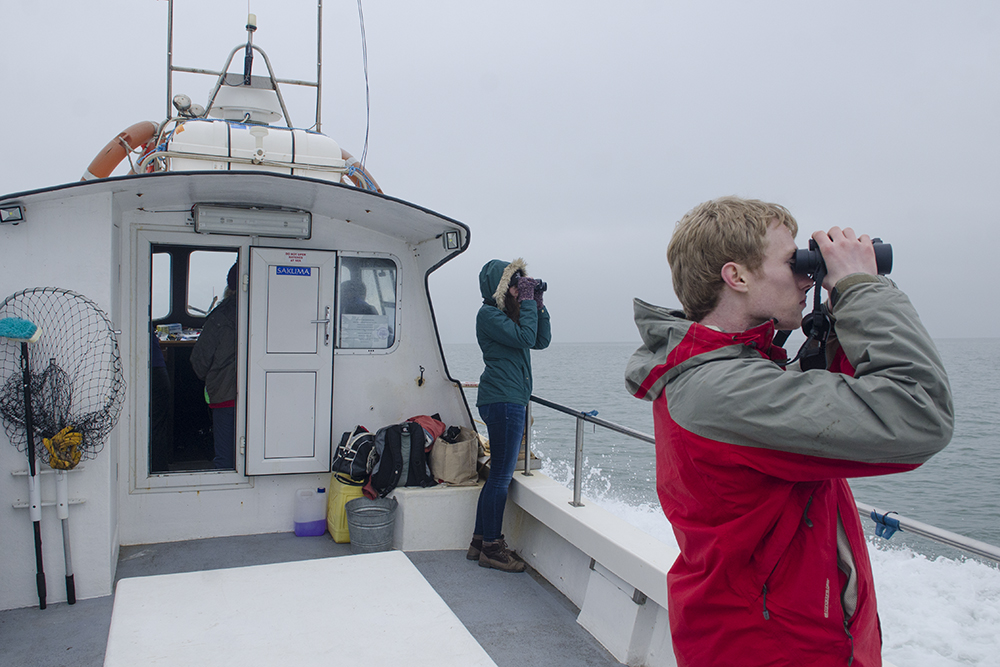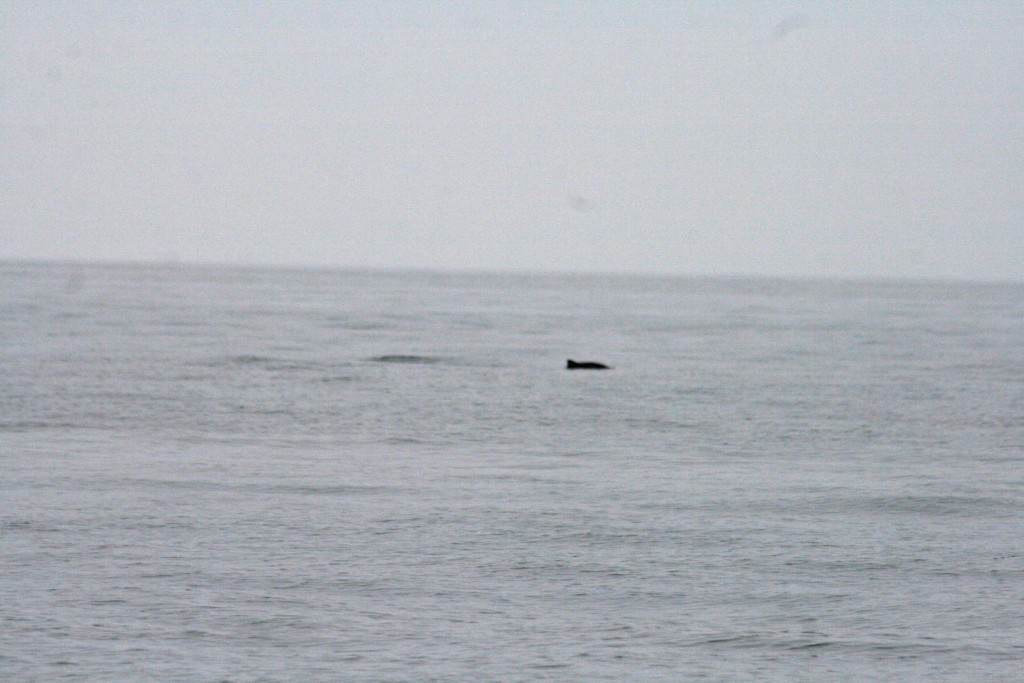With numerous bottlenose dolphin sightings along the Welsh Coast this February, the Welsh Sea Watchers team took to the sea again with the support of the charity Sea Changers, and a number of eager volunteers. The aim? To photograph and identify the dolphins braving Wales’ cold winter waters.
One of our dedicated volunteers, Jake Taylor-Bruce, who braved the cold and wind that day, tells us about his experience:
A Day at Sea
The day dawned grey and cloudy with occasional patches of muted sunshine filtering through the clouds. I was picked up from Bangor by one of the other volunteers and the drive to Rhyl offered some stunning views of clouds cascading of the mountain slopes to our right, highlighted in silver by occasional bursts of sunshine. At Rhyl, we met the Sea Watch staff and volunteers who would be on the boat that day. Although I have done several land based sea watches in the past, this was my first boat based survey and I had never met any of the others before. Thankfully they were all very friendly and made me feel welcome. On board, duties for the day were divided between the group with a rota meaning that we all exchanged roles. This meant that there were always two people as designated observers, one person who was ready to record any sightings seen, and one person who took regular recordings of the sea state, the visibility, our coordinates and other such information. The remaining members were free to relax or observe as pleased.
By the time we set out on the boat, the forecast sunshine had failed to break through the cloud cover, and the day remained grey and cloudy. The sea however, was flat as polished glass, and there was only a soft wind as we left the harbour. It wasn’t long before our first sighting, a grey seal with its head out the water watching us as we passed by. Although very common, it is always a curious sight to see these large mammals (big males can reach around 3m in length) with their almost dog like heads drifting at the surface. As we passed by, this one watched us just as curiously as we watched it. As we headed out towards Great Orme, we passed more seals dotted around the bay (we saw seven swimming over the day), and we even saw large numbers pulled up and resting on a beach. These animals, which are so graceful and lithe in the water always look so incongruous on land, and only move with great, graceless effort across the sand.
Throughout the day we also saw eight harbour porpoises. These are the smallest (only around 1.6m long) and the most common cetacean found in the UK. They are however, very shy when it comes to boats, as we quickly discovered when groups we approached to identify quickly vanished below the grey sea surface. The most memorable encounter we had with the local porpoises was when we did manage to get quite close to a small group, feeding on fish that swam just out of our sight. As we watched, their backs repeatedly rose through the silken sea, moving so smoothly they caused barely a ripple on the surface. Any sighting like this had everyone on deck scrambling for binoculars and cameras in order to get a better view of them. As we left the Great Orme and headed out to see, we were treated to a spectacular view of sunlight piercing the clouds in silver columns over Llandudno bay. Throughout the day we also saw many seabirds, such as cormorants and guillemots. The latter with their stark black and white plumage were more likely to dive below the surface and swim away from our approaching boat than they were to fly away like you might expect from a bird.
Although the weather was grey, and the air was cool, it was a wonderful opportunity to leave the land behind and spend a day out at sea contributing to useful survey data. As we pulled back into harbour it was with the satisfaction of a days work done and I certainly look forward to my next opportunity to get out on the sea with the Sea Watch Foundation!
If you live in Wales and would like to get involved with the work of the Sea Watch Foundation, please contact Katrin on katrin.lohrengel@seawatchfoundation.org.uk to find out more about the Welsh Sea Watchers Project and how you can get involved!




































